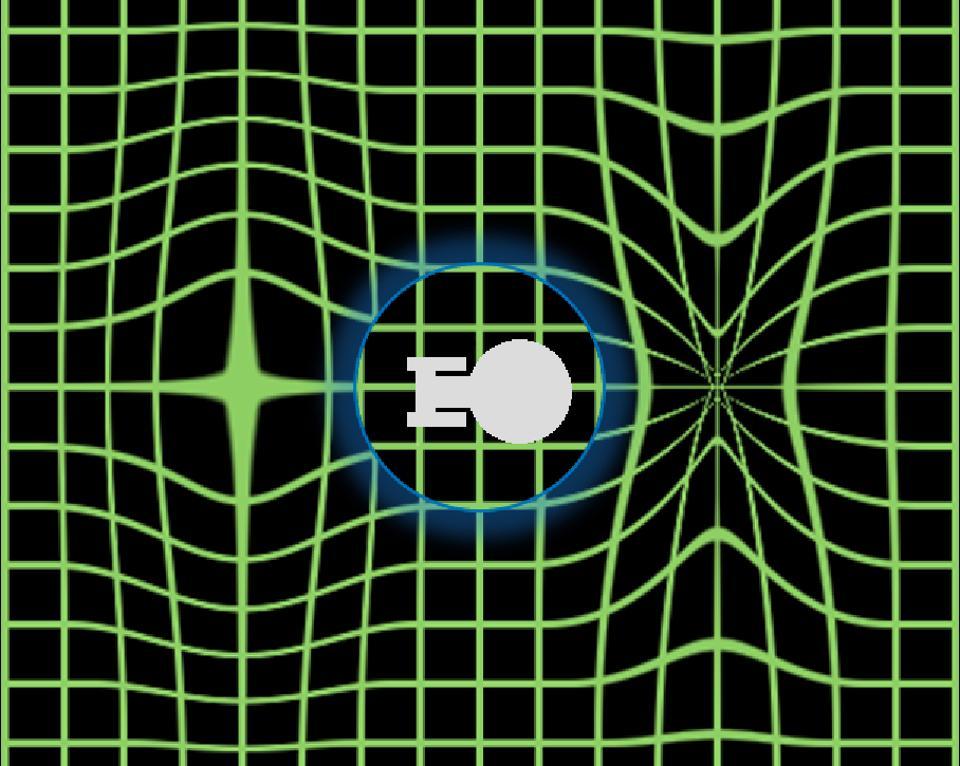 An illustration of a warp field distorting space from Star Trek, shortening the space in front of the ship and extending it from behind.
An illustration of a warp field distorting space from Star Trek, shortening the space in front of the ship and extending it from behind.No matter who inspired space travel - NASA, Star Trek or Einstein, they contain amazing possibilities. Many of us dreamed of getting into space and flying between planets or stars on a rocket or via a teleport beam, but we still have to deal with the laws of physics ... as well as with our families when we return home. This is what worries our reader telling the following story:
Sometimes, usually on Fridays after work, my friend Scotty, with the help of a teleportation beam, moves me to the Enterprise for a walk around the Sun in Earth orbit. The walk takes about 2 hours, so our speed should be pretty close to the speed of light, but not exceed it. During the walk, I drink a couple of bottles of beer, so by the time Scotty moves me back to the doorstep at home, my wife does not believe me when I tell her that I was not at the local pub.
Pretty convincing story. Let's see if the reader’s journey satisfies the laws of physics.
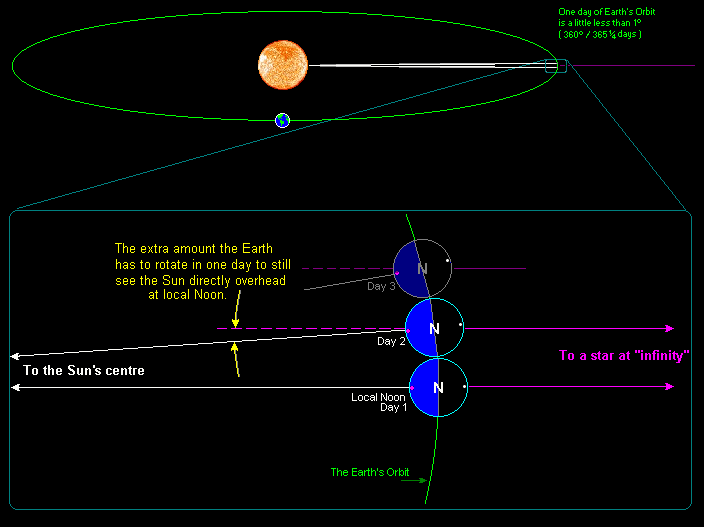 The path, repeating the orbit of the Earth around the Sun, has a length of 940 million km
The path, repeating the orbit of the Earth around the Sun, has a length of 940 million kmTo fly around the sun in Earth orbit, you need to go 940 million km. To do it in a couple of hours, you need to travel at an average speed of 44% of the speed of light - this allows Einstein's theory of relativity. You do not need wormholes, warp engine, nothing but ordinary missiles. And a huge amount of energy.
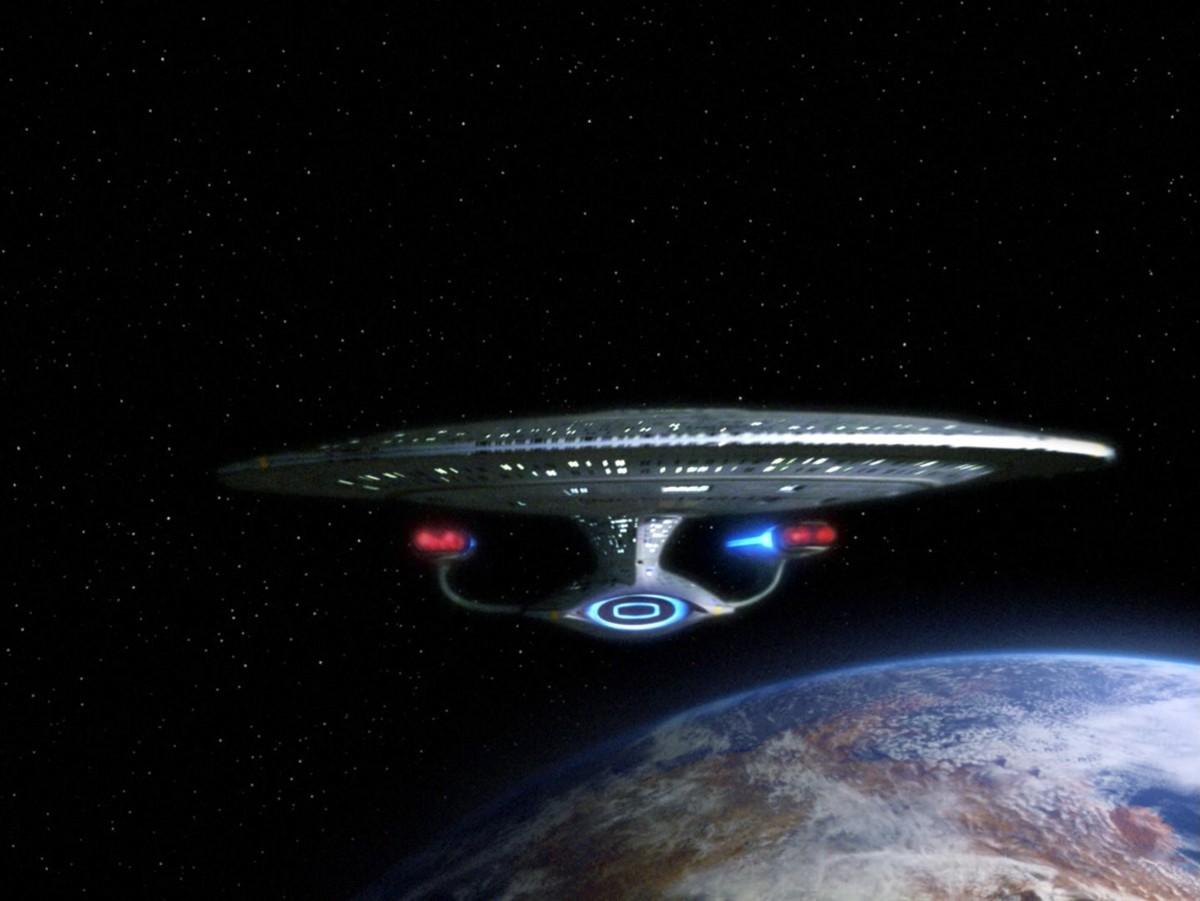 Star Ship Enterprise from Star Trek: The Next Generation (Season 3, Episode 11)
Star Ship Enterprise from Star Trek: The Next Generation (Season 3, Episode 11)In the Star Trek series, the movement with subluminal speeds was provided by means of pulse engines. The warp engine is well suited for moving over huge distances, but it is not adapted for precise maneuvers; you absolutely do not want, coming out of the warp mode, to be inside the planet or star. Pulse engines do not bend the fabric of space-time, they simply work according to the principle of Newton's third law: throw out atoms, plasma or light in the opposite direction of motion, and accelerate in the direction you want. That is how absolutely all the rockets invented by mankind worked.
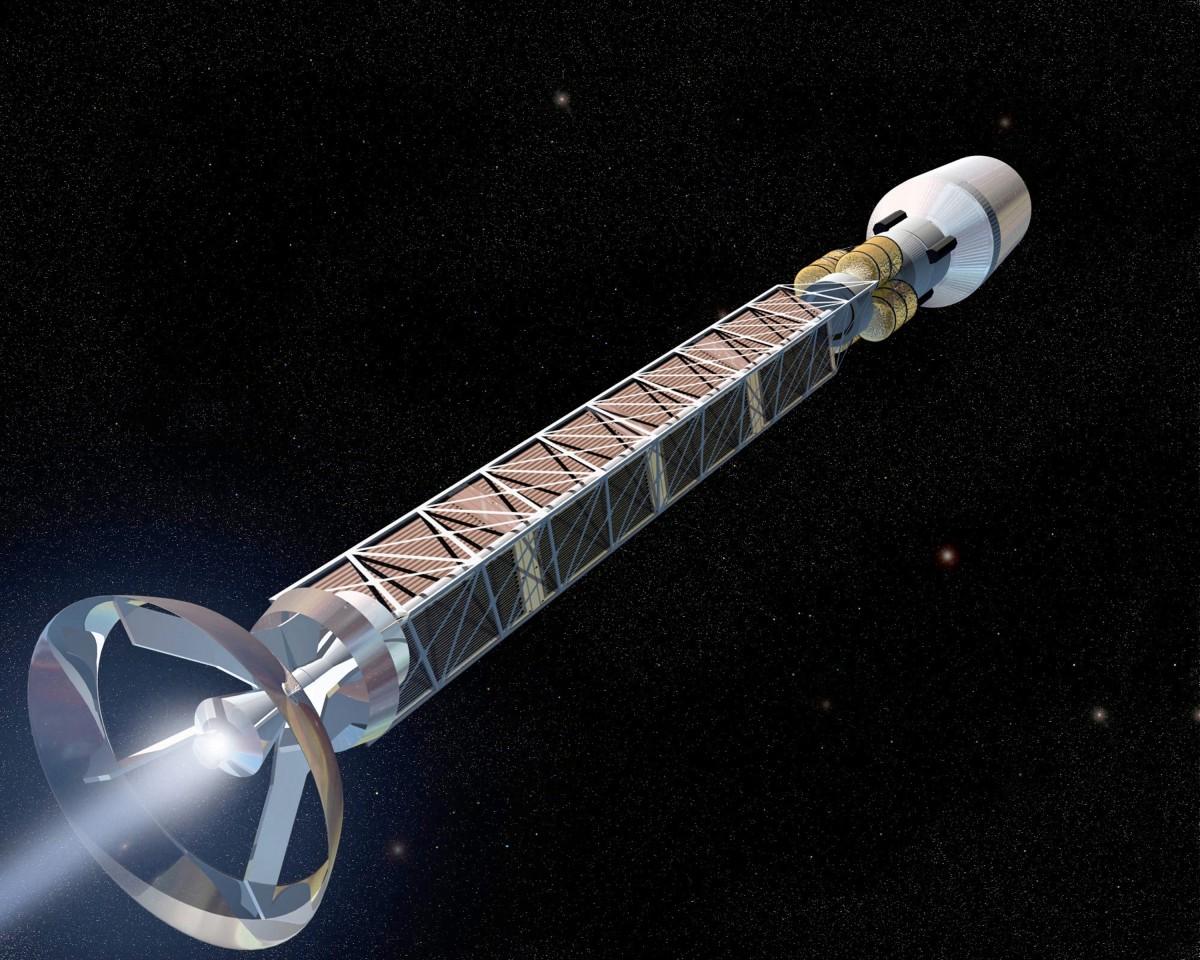 The plasma engine, the engine on antimatter, nuclear or ordinary forces any rocket to move on the same principle of thrust. Even a pulse drive from Star Trek.
The plasma engine, the engine on antimatter, nuclear or ordinary forces any rocket to move on the same principle of thrust. Even a pulse drive from Star Trek.Suppose that teleportation carriers worked, and the Enterprise did not slow down when it picked you up, then additional acceleration would be needed only for your relatively minor mass, in the region of 80 kg. To disperse you to 44% of the speed of light, you need about 100 PJ of energy - as much as was emitted with the most powerful explosion ever produced in the United States: the
B41 bombing.
 The underwater nuclear bomb from Operation Crossroads had only a thousandth of the energy required to accelerate a person at up to 44% of the speed of light.
The underwater nuclear bomb from Operation Crossroads had only a thousandth of the energy required to accelerate a person at up to 44% of the speed of light.Once on board the Enterprise, you will encounter an even bigger problem: maintaining your speed in Earth orbit. “Wait a minute,” you tell me, “as long as I maintain the same speed, doesn’t Newton’s first law about a moving object that remains in motion prevent me from doing this?” Yes, as long as you are satisfied with one direction of travel - tangent to the Earth orbit. Welcome to the interplanetary space, and soon to the interstellar space. It will take you only a few hours for what it took the Voyagers for decades: to leave the solar system.
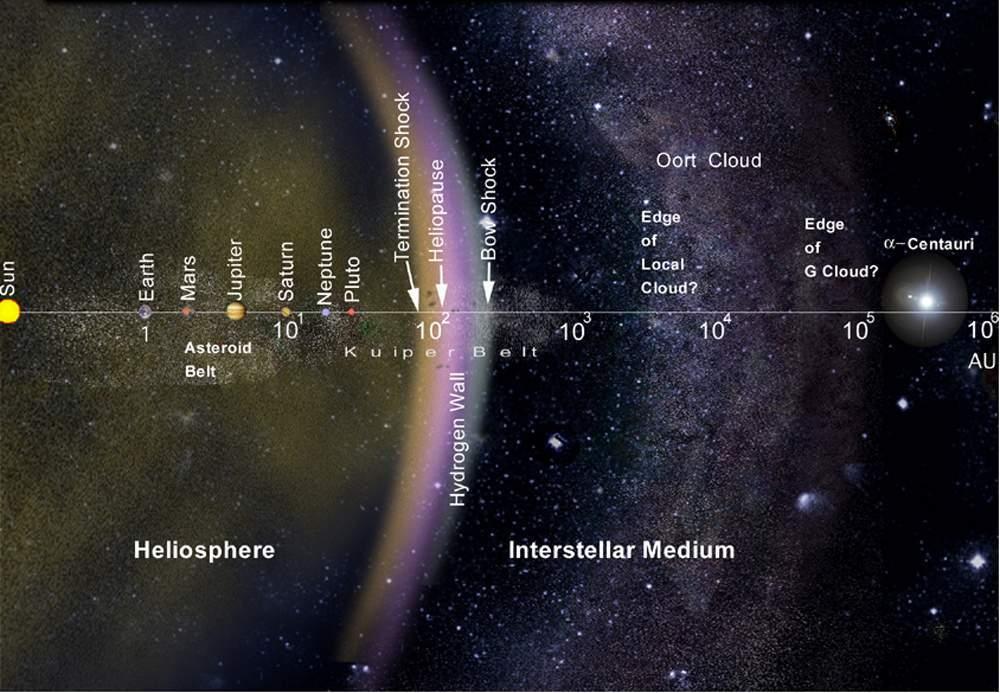 Voyager probes took about 40 years to leave the solar system. Moving with 44% of the speed of light, the spacecraft can do it in less than 24 hours.
Voyager probes took about 40 years to leave the solar system. Moving with 44% of the speed of light, the spacecraft can do it in less than 24 hours.Instead, you want to continue to orbit the Earth, which means you will need to organize a tremendous centripetal force in order to remain in orbit. At such gigantic speeds, you need a constant thrust of 140 Teranyutons just to keep the Enterprise, weighing about a million tons, in a stable orbit for the speed you need. Even if your pulse engine worked to annihilate matter and antimatter, you would need to burn about 100,000 tons of mass, turning it into pure energy according to the formula E = mc
2 , to make one revolution around the Sun at a speed of 44% of the speed of light.
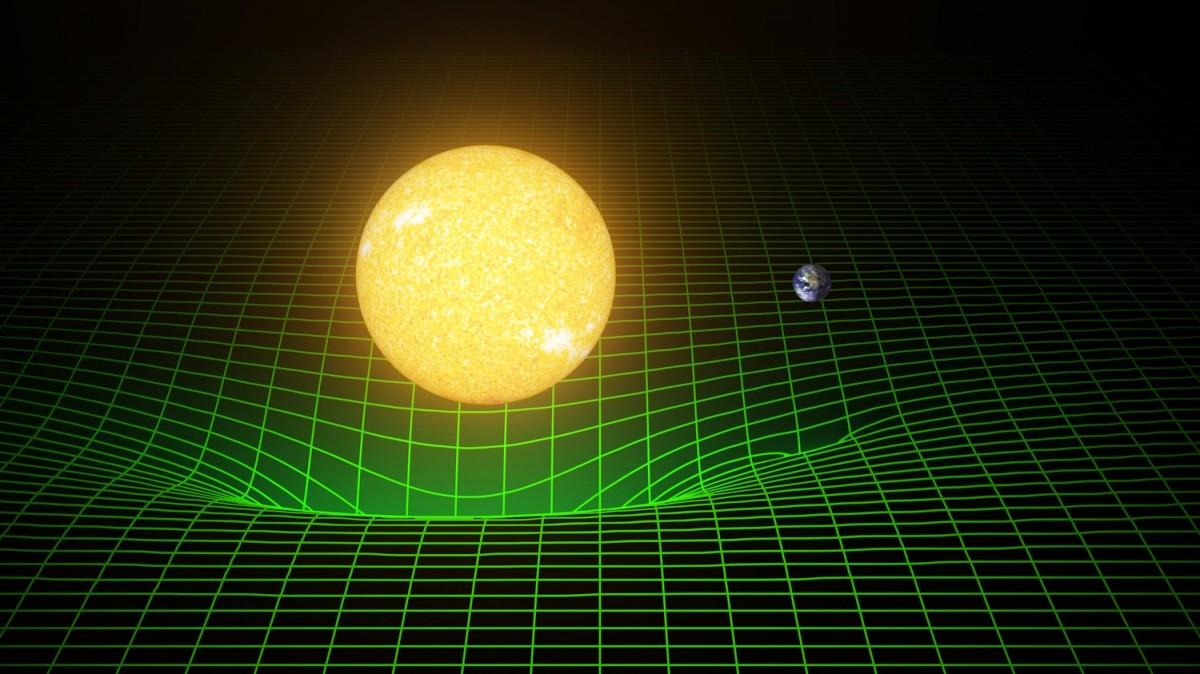 Make a revolution around the Sun, being at the same distance as the Earth, will be free in terms of energy - only if you move at the same speed as the Earth
Make a revolution around the Sun, being at the same distance as the Earth, will be free in terms of energy - only if you move at the same speed as the EarthLet's say you did it. Let's say your friend Scotty decided that you deserve such a huge expenditure of energy, and you turned around the Sun in two hours. But it is here, on the Earth two hours have passed, and you will find that from your point of view the flight went a little faster. Due to the fact that you are moving close to light speed, your watches - both biological and wrist watches, smart watches and any other mechanical devices - will go slower.

Light clocks will go differently for observers moving at different speeds - due to the constancy of the speed of light. Einstein’s Special Theory of Relativity determines how time and distance are transformed.
This effect means that for you this journey will take 108 minutes, that is 12 minutes less than your family will measure remaining at home. If you moved twice as fast, at 88% of the speed of light, the whole journey would have taken you only 56 minutes. The faster you move, the slower your time goes.
But how is this possible? Have you not gone the same distance in both cases?
 Moving at a speed close to light speed transforms times and distances. The lengths, including the length of the ship, become shorter in the direction of travel.
Moving at a speed close to light speed transforms times and distances. The lengths, including the length of the ship, become shorter in the direction of travel.Only from the point of view of the Earth. From your point of view, not only time is stretched, but length is also shortened. The faster you move (the closer to the speed of light), the more space is compressed in the direction of your movement. These transformations must occur in order to maintain the constancy of the speed of light - it is one in all reference systems. If time passes in a different way, then the dimensions of the space must also change so that everything coincides. This is the key to the service station, and at light speeds, it works no matter where you go.
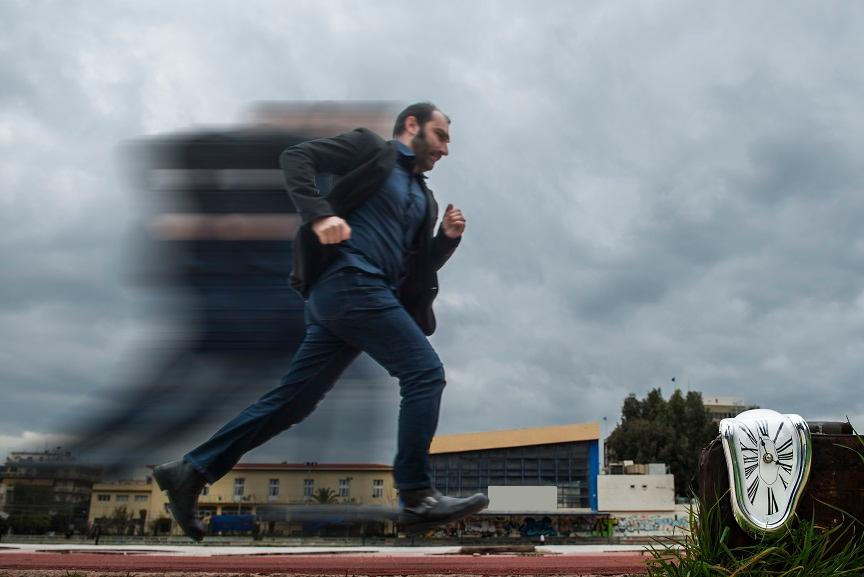 In space or on earth, motion with relative velocities leads to the appearance of relativistic effects.
In space or on earth, motion with relative velocities leads to the appearance of relativistic effects.So what about whether your spouse will believe you or not? Here are some tips:
• Do not try to convince her that you have been under two hours. Respect its reference system - it was not in yours.
• Enjoy a beer, but don't try to prove to her that you were not in a pub just because you were not in a local pub.
• Your XXI century technology should work in any reference system - so take a couple of photos already!
 Once in the spacecraft, take a couple of photos!
Once in the spacecraft, take a couple of photos!When you return home, you will realize that you have gained incomparable experience and that you are 12 minutes younger than you would have been if you did not make this trip. Having settled down on a sofa, you again will appear in the same place of space and time, but the ways which have led you there will be very different. You went into space, traveled 940 million km through space, and to compensate for this, the path took you less time. You two will have the same starting and ending points, but the paths will be very different: her journey will be longer in time, yours in distance. And the constant for both of you will be the speed of light, and it will be like that at any moment of your journey.
 The book by Ethan Siegel "Tractology: Star Trek Science"Ethan Siegel - astrophysicist, popularizer of science, blog Starts With A Bang! He wrote the books Beyond The Galaxy , and Treknologiya: Star Trek Science [ Treknology ].
The book by Ethan Siegel "Tractology: Star Trek Science"Ethan Siegel - astrophysicist, popularizer of science, blog Starts With A Bang! He wrote the books Beyond The Galaxy , and Treknologiya: Star Trek Science [ Treknology ].